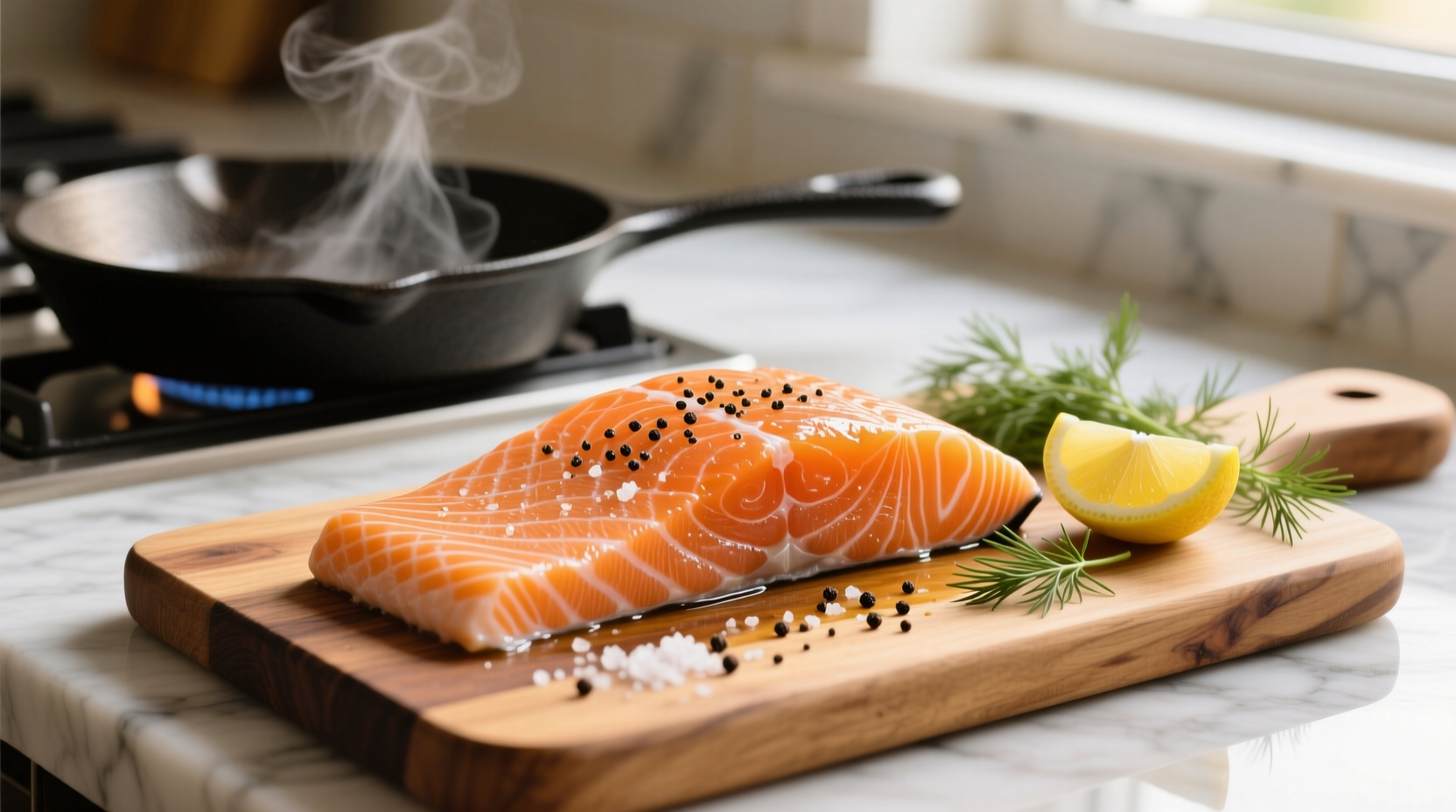Nothing compares to the rich, buttery taste of properly cooked fresh salmon. Yet many home cooks struggle with dry, overcooked results or uncertainty about doneness. This guide delivers science-backed methods used by professional chefs, verified by USDA food safety standards, to transform your salmon cooking forever. Whether you're using a skillet, oven, or grill, you'll master the precise timing, temperatures, and visual cues that guarantee restaurant-quality results.
Selecting Quality Fresh Salmon
Start with premium ingredients. Look for salmon with firm, springy flesh that returns to shape when gently pressed. The color should be vibrant - deep orange to pink for most varieties. Avoid fish with brown spots, dry patches, or a strong 'fishy' odor; fresh salmon should smell like the ocean, not pungent. When buying, ask about the source: wild-caught salmon typically has a leaner profile while farmed offers richer fat marbling.
| Cooking Method | Time per Inch | Recommended Temp | Best For |
|---|---|---|---|
| Pan-Searing | 4-6 minutes per side | Medium-high heat | Skin-on fillets |
| Baking | 10-12 minutes | 400°F (204°C) | Even cooking, multiple portions |
| Grilling | 6-8 minutes per side | Medium heat | Summer cooking, smoky flavor |
| Poaching | 8-10 minutes | 160-180°F (71-82°C) | Delicate texture, meal prep |
Essential Preparation Steps
Proper preparation makes the difference between good and great salmon. Always pat fillets completely dry with paper towels before cooking - moisture is the enemy of proper searing. For skin-on fillets, score the skin lightly in 1-inch intervals to prevent curling. Season just before cooking with salt, pepper, and your chosen herbs. Never marinate salmon in acidic ingredients (like lemon juice) for more than 30 minutes, as this begins to 'cook' the fish through ceviche-style denaturation.

Mastering Pan-Seared Salmon
This restaurant favorite delivers crispy skin and tender flesh when executed correctly. Heat a heavy skillet (cast iron works best) over medium-high heat until a drop of water sizzles on contact. Add 1 tablespoon of high-smoke point oil (avocado or grapeseed). Place salmon skin-side down, pressing gently for 10 seconds to ensure full contact. Cook undisturbed for 4-6 minutes until skin is golden and releases naturally from the pan. Flip and cook 2-4 minutes more until the internal temperature reaches 145°F (63°C) as measured by an instant-read thermometer at the thickest part.
Baking Salmon Perfectly
Baking provides consistent results with minimal attention. Preheat oven to 400°F (204°C). Line a baking sheet with parchment. Place seasoned salmon on the sheet, skin-side down if skinless. Bake 10-12 minutes for 1-inch thick fillets. For precise results, check temperature at 8 minutes. The FDA recommends cooking fish to an internal temperature of 145°F, at which point salmon becomes opaque and flakes easily with a fork. According to FDA guidelines, this temperature destroys harmful bacteria while preserving moisture.
Grilling Techniques
Grilling imparts delicious smoky notes but requires careful temperature management. Clean and oil grates thoroughly. Preheat grill to medium (about 375°F). Place salmon skin-side down on the grill at a 45° angle to prevent sticking. Close lid and cook 6-8 minutes until grill marks form and fish releases easily. Flip carefully and cook 2-4 minutes more. For thicker cuts, use two-zone cooking: sear over direct heat, then move to indirect heat to finish cooking without burning.
Doneness Indicators: Beyond Temperature
While a thermometer provides the most accurate measure, these visual cues confirm perfect doneness:
- Color change: Translucent pink becomes opaque throughout
- Flaking: Gently press with fork - should separate into large flakes
- Texture: Firm but yielding, not rubbery or mushy
- Shrinkage: About 20% reduction from raw size
Remember that salmon continues cooking after removal from heat (carryover cooking). Remove at 140°F for perfect 145°F final temperature.
Avoiding Common Mistakes
Even experienced cooks make these errors:
- Overcrowding the pan: Causes steaming instead of searing
- Moving too soon: Prevents proper crust formation
- Overcooking: Salmon dries out quickly past 145°F
- Seasoning too early: Salt draws out moisture if applied more than 15 minutes pre-cook
Flavor Pairing Suggestions
Complement salmon's richness with these classic combinations:
- Citrus: Lemon, orange, or yuzu with dill
- Herbs: Dill, tarragon, or fennel fronds
- Sauces: Beurre blanc, miso glaze, or herb yogurt
- Sides: Roasted asparagus, quinoa, or cucumber salad
Storage and Food Safety
Store fresh salmon in the coldest part of your refrigerator, on ice if possible, and use within 1-2 days. Never thaw frozen salmon at room temperature - use the refrigerator or cold water method. Leftover cooked salmon keeps for 3-4 days refrigerated. The World Health Organization emphasizes that proper seafood handling prevents foodborne illness, particularly important for vulnerable populations.











 浙公网安备
33010002000092号
浙公网安备
33010002000092号 浙B2-20120091-4
浙B2-20120091-4